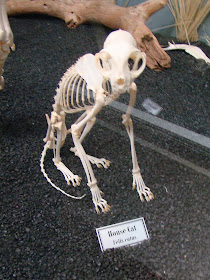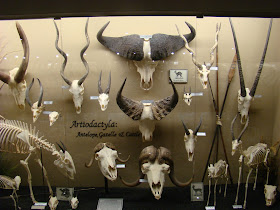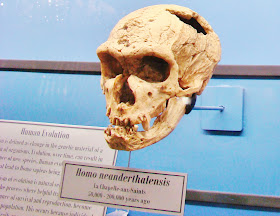

Exploring Oklahoma Museum of Osteology a One-of-A-Kind Treasure
 from all corners of the orld
from all corners of the orldMuseum of Osteology
10301 South Sunnylane Rd.
Oklahoma City, OK 73160
Latitude 35.364829, Longitude -97.44172 (Google Maps)
From I-35,continue on I-35 until you reach exit 121B. Go east on I-240 for 3.3 miles. until you reachexit 7 (Sunnylane road). Head south for 1.7 miles until you reach the museum. We sit on the west side of the road. Hope to see you soon!
From I-40 west of Oklahoma City, Continue east on I-40 until you reach exit 147A, merge onto I-44. In 4.8 miles you will make a slight left and merge onto I-240. Continue on I-240 for 7.5 miles until you reach exit 7 (Sunnylane road). Head south for 1.7 miles until you reach the museum. We sit on the west side of the road. Hope to see you soon!
From I-40 east of Oklahoma City. Heading west as you come into Oklahoma City metro you will make a slight right onto I-240 W (signs for Lawton/Dallas). Continue on I-240 for 8.9 mile until you reach exit 7 (Sunnylane road). Head south for 1.7 miles until you reach the museum. We sit on the west side of the road. Hope to see you soon!
Phone: (405) 814-0006
E-mail: Info@MuseumofOsteology.org
The family Felidae is comprised entirely of cats. There are approximately 41 species found throughout the world. Cats possess some impressive traits for hunting. Good vision, sharp retractable claws, and long slender canine teeth help to make cats some of the most effective predators in nature.
There are many species of flightless birds ranging from rails to penguins to the ostrich. Flightless birds evolved from birds that could fly but in areas where flight was not needed for survival. Flightless bird’s bones are more dense and heavier than flighted birds. With the exception of penguins, which have adapted to “flying” through the water, most flightless birds lack a keeled sternum for flight muscle attachment. These skeletal adaptations, along with the absence of flight feathers, permanently ground these birds.

































Sounds like a unique place. Interesting enough to spend a day or two...you know, 'boning up'...
ReplyDeleteIt seems these guys have been in business 40 years and have been doing bone cleaning and skeletal assembly for museums all over the world. The guy's private collection got so big (and the fact that he wanted his on humpback whale)that it got him into his own museum. Unlike most of us he has his sons and grand kids involved so this will most probably keep on growing. Some day when I have a terrible terrible cold, I'm going to tour the place where they deflesh and process the bones.
ReplyDelete